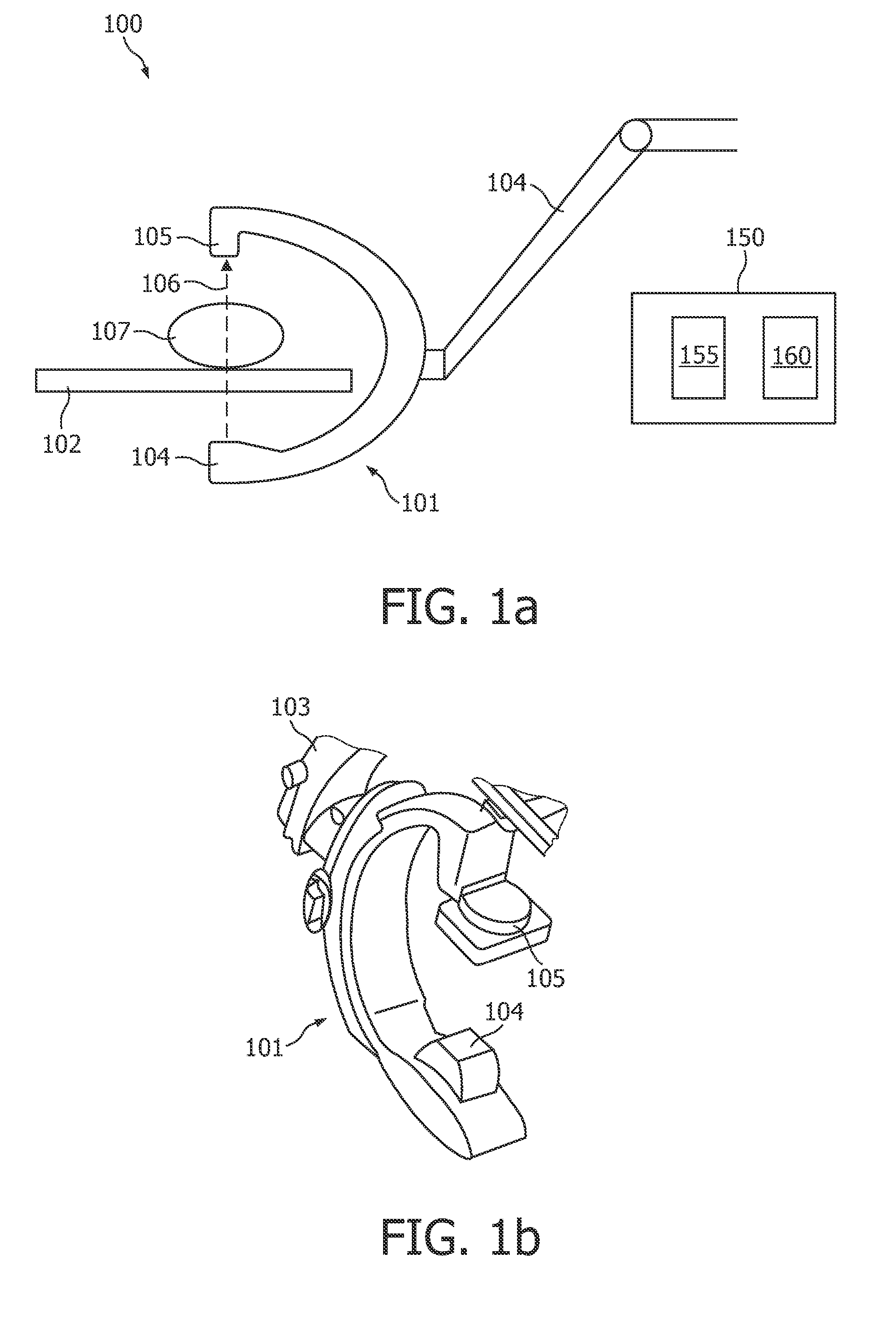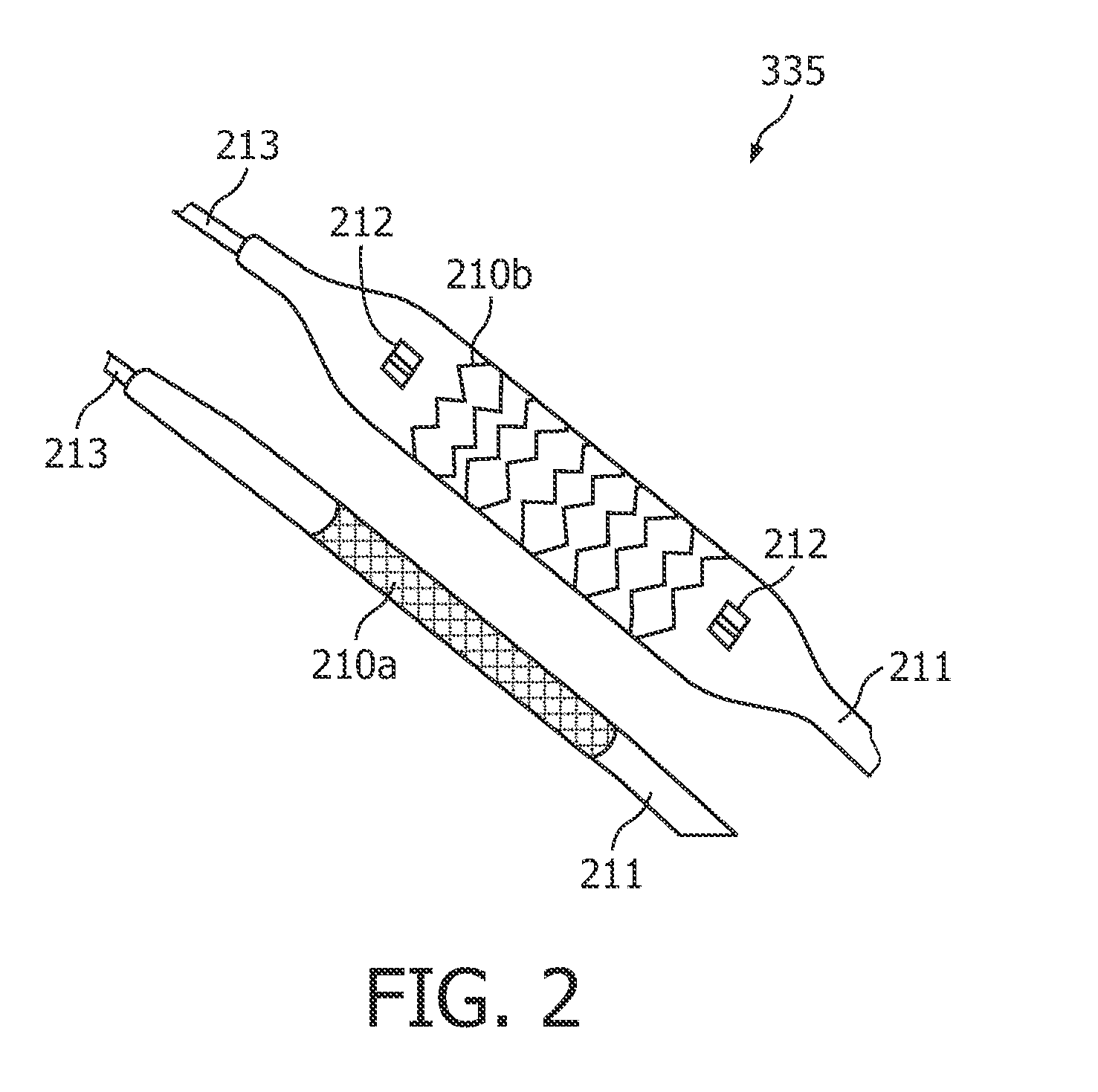Spatial characterization of a structure located within an object by identifying 2d representations of the structure within section planes
- Summary
- Abstract
- Description
- Claims
- Application Information
AI Technical Summary
Benefits of technology
Problems solved by technology
Method used
Image
Examples
Embodiment Construction
[0069]The illustration in the drawing is schematically. It is noted that in different figures, similar or identical elements are provided with the same reference signs or with reference signs, which are different from the corresponding reference signs only within the first digit.
[0070]Referring to FIG. 1a and 1b of the drawing, a medical X-ray imaging system 100 according to an embodiment of the invention comprises a swing arm scanning system (C-arm) 101 supported proximal a patient table 102 by a robotic arm 103. Housed within the swing arm 101, there is provided an X-ray tube 104 and an X-ray detector 105. The X-ray detector 105 is arranged and configured to receive X-rays 106, which have passed through a patient 107 representing the object under examination. Further, the X-ray detector 105 is adapted to generate an electrical signal representative of the intensity distribution thereof. By moving the swing arm 101, the X-ray tube 104 and the detector 105 can be placed at any desir...
PUM
 Login to View More
Login to View More Abstract
Description
Claims
Application Information
 Login to View More
Login to View More - R&D
- Intellectual Property
- Life Sciences
- Materials
- Tech Scout
- Unparalleled Data Quality
- Higher Quality Content
- 60% Fewer Hallucinations
Browse by: Latest US Patents, China's latest patents, Technical Efficacy Thesaurus, Application Domain, Technology Topic, Popular Technical Reports.
© 2025 PatSnap. All rights reserved.Legal|Privacy policy|Modern Slavery Act Transparency Statement|Sitemap|About US| Contact US: help@patsnap.com



